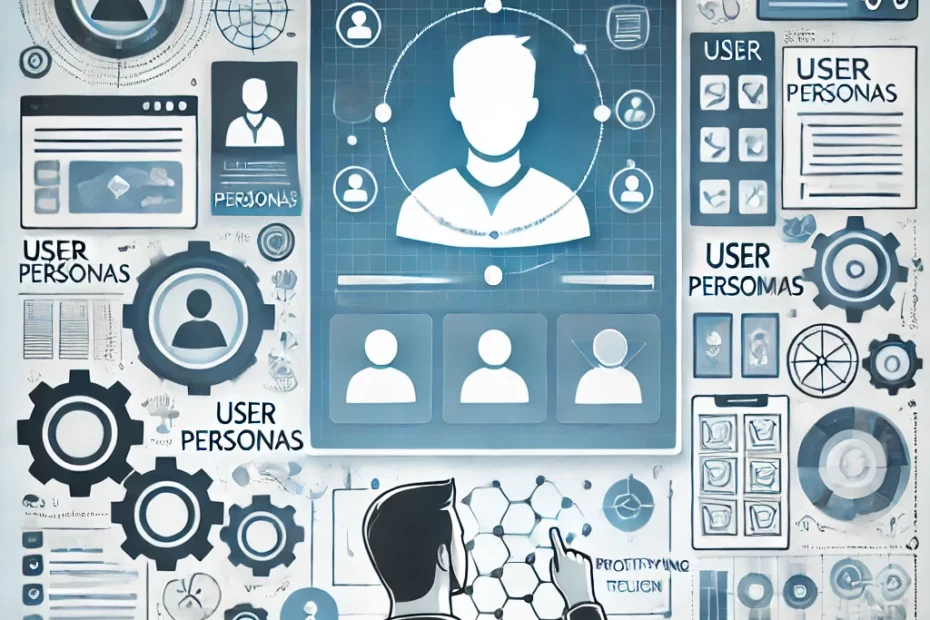User-centered design (UCD) is no longer just a trend; it’s a necessity for businesses looking to build successful software products. Prioritizing the needs, behaviors, and goals of users, UCD ensures that software solutions are intuitive, efficient, and enjoyable to use. In this article, we’ll explore the key benefits of UCD, how it impacts software development, and best practices for implementing it in your projects.
1. What is User-Centered Design?
User-centered design is a development approach that places users at the forefront of the design process. Instead of assuming what users need, developers and designers engage directly with them through research, testing, and feedback loops. This iterative process results in software that meets real user needs, reduces friction, and delivers a superior experience.
Key UCD principles include:
- Understanding the User: Gathering information about user needs, behaviors, and pain points.
- Involving Users in Design: Creating prototypes and testing them with users to gather feedback.
- Iterative Process: Continuously refining the product based on user insights and evolving needs.
2. Why is User-Centered Design Important in Software Development?
a. Improved Usability
By focusing on users’ needs, software developers can create products that are easy to navigate, reducing the learning curve. When users find an application intuitive, they are more likely to engage with it and stay loyal, reducing churn rates.
A software product that aligns with user expectations leads to higher satisfaction levels. Positive user experiences translate into better reviews, increased retention, and word-of-mouth marketing. This engagement is crucial for building a strong user base.
c. Reduced Development Costs
Involving users early in the design process allows teams to identify potential issues before they become costly to fix. By testing prototypes and collecting feedback, developers can avoid unnecessary features and ensure the software aligns with user needs, saving time and resources.
d. Increased Competitive Advantage
User-centered design enables businesses to create products that stand out in a crowded market. By offering solutions that are precisely tailored to users, companies can differentiate themselves from competitors and position their software as the go-to option for target audiences.
3. Best Practices for Implementing User-Centered Design
a. Conduct User Research Early and Often
Engage with potential users from the very beginning of the project. Conduct interviews, surveys, and usability tests to understand their needs, goals, and challenges. The more data collected, the better the development team can tailor the product.
b. Create Personas
Developing user personas helps identify different user groups and their unique needs. Personas serve as a reference point throughout the design process, ensuring that developers and designers stay aligned with user goals.
c. Iterate and Prototype
Build prototypes early to visualize the software’s functionality and layout. Test these prototypes with real users, gather feedback, and make improvements. Iterative testing ensures that the product evolves based on actual user interactions and preferences.
d. Embrace Accessibility Standards
Inclusive design is an essential part of UCD. Ensure the software is accessible to all users, including those with disabilities. Incorporating features like keyboard navigation, screen reader compatibility, and appropriate color contrasts can make a significant difference.
e. Foster Cross-Functional Collaboration
User-centered design thrives in environments where designers, developers, and stakeholders work together. Regular collaboration sessions ensure that all team members are on the same page and contribute to making user-friendly design decisions.
4. How UCD Drives Business Success
Businesses that adopt user-centered design principles see measurable outcomes, including:
- Increased ROI: Products designed with users in mind often see higher adoption rates, leading to increased revenue and return on investment.
- Enhanced Brand Loyalty: When users feel valued and understood, they are more likely to stick with a product and recommend it to others, boosting brand reputation.
- Reduced Support Costs: Intuitive software leads to fewer user errors, reducing the need for extensive support resources.
5. Real-World Examples of User-Centered Design
Companies like Apple, Google, and Airbnb have set the bar high with their user-centric products. Apple’s focus on simplicity and intuitive design has made its devices incredibly user-friendly. Google continually tests and refines its products based on user feedback to enhance usability. Similarly, Airbnb’s success is largely attributed to its commitment to understanding both hosts’ and travelers’ needs, creating a seamless experience for both groups.
User-centered design is not just about aesthetics; it’s about ensuring that the software serves its users effectively and efficiently. By embracing UCD principles, businesses can create software that not only meets but exceeds user expectations, leading to increased satisfaction, loyalty, and ultimately, business success. For software companies like Enozom, implementing UCD can be a game-changer, setting them apart in the competitive tech landscape.
